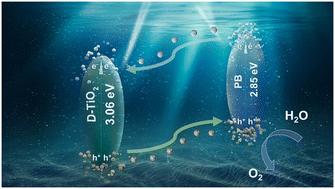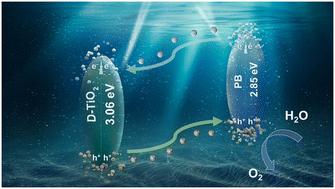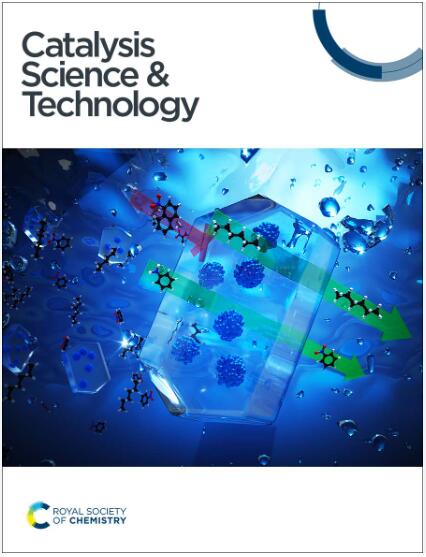表面修饰普鲁士蓝的缺陷二氧化钛复合光阳极用于高效光电化学水分离
IF 4.4
3区 化学
Q2 CHEMISTRY, PHYSICAL
引用次数: 0
摘要
太阳能制氢因其高效、环保的特性,在应对能源危机方面备受关注。在这项研究中,我们成功地利用一种简单的电化学还原方法在二氧化钛纳米棒光电负极(称为缺陷二氧化钛(D-TiO2))上引入了氧空位。同时,普鲁士蓝(PB)沉积在 D-TiO2 上,形成了核壳复合光阳极材料。通过优化还原时间,D-TiO2 的电荷分离得到了改善。加入 PB 后,TiO2 和 PB 之间形成了 II 型异质结。异质结的形成扩大了 TiO2 的光吸收范围,增加了活性位点,并由于 PB 的大表面积而减少了光生电荷的重组。与 RHE 相比,D-TiO2@PB 的光电流密度在 1.23 V 时达到 2.10 mA cm-2,IPCE 增强了 35.8%。本文章由计算机程序翻译,如有差异,请以英文原文为准。


Defective TiO2 composite photoanodes with surface-modified Prussian blue for efficient photoelectrochemical water splitting†
Solar hydrogen production has garnered significant attention in addressing the energy crisis due to its efficient and environmentally friendly nature. In this study, we successfully used a simple electrochemical reduction method to introduce oxygen vacancies on a TiO2 nanorod photoanode, termed defective TiO2 (D-TiO2). Meanwhile, Prussian blue (PB) was deposited on D-TiO2 to create a core–shell composite photoanode material. By optimizing the reduction time, the charge separation of D-TiO2 is improved. The addition of PB resulted in the formation of a II-type heterojunction between TiO2 and PB. The formation of the heterojunction enlarges the light absorption range of TiO2, increases the active sites, and reduces the recombination of photogenerated charges due to the large surface area of PB. The photocurrent density of D-TiO2@PB reaches 2.10 mA cm−2 at 1.23 V vs. RHE, with an enhanced IPCE of 35.8%.
求助全文
通过发布文献求助,成功后即可免费获取论文全文。
去求助
来源期刊

Catalysis Science & Technology
CHEMISTRY, PHYSICAL-
CiteScore
8.70
自引率
6.00%
发文量
587
审稿时长
1.5 months
期刊介绍:
A multidisciplinary journal focusing on cutting edge research across all fundamental science and technological aspects of catalysis.
Editor-in-chief: Bert Weckhuysen
Impact factor: 5.0
Time to first decision (peer reviewed only): 31 days
 求助内容:
求助内容: 应助结果提醒方式:
应助结果提醒方式:


